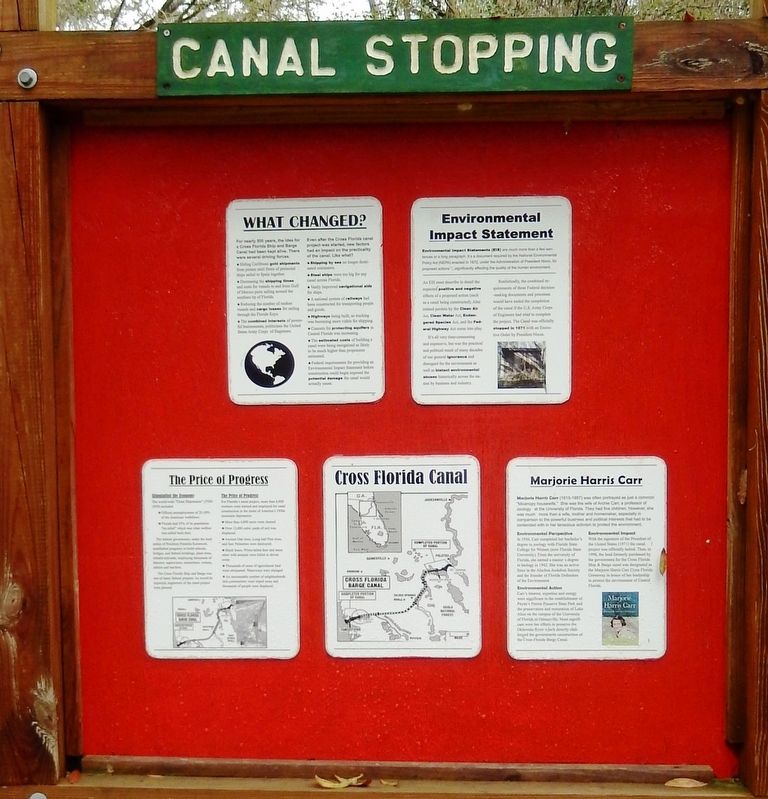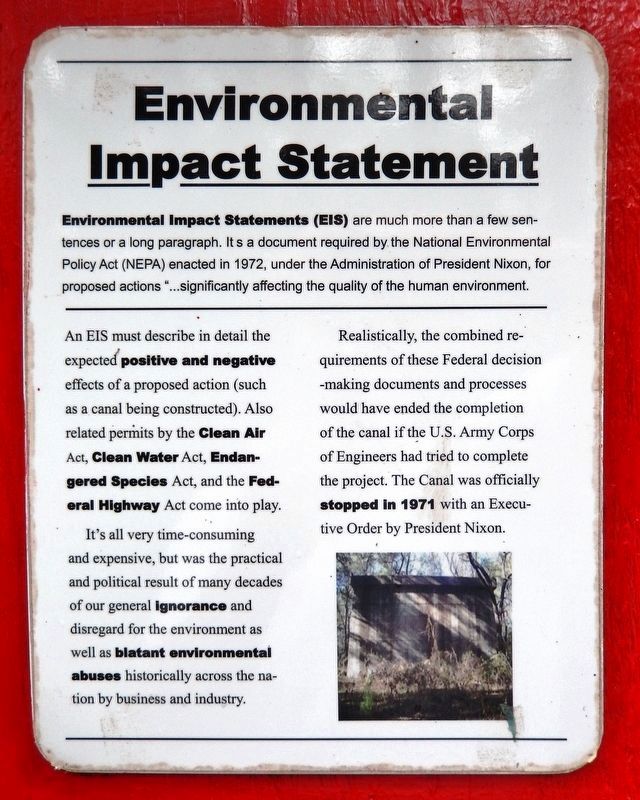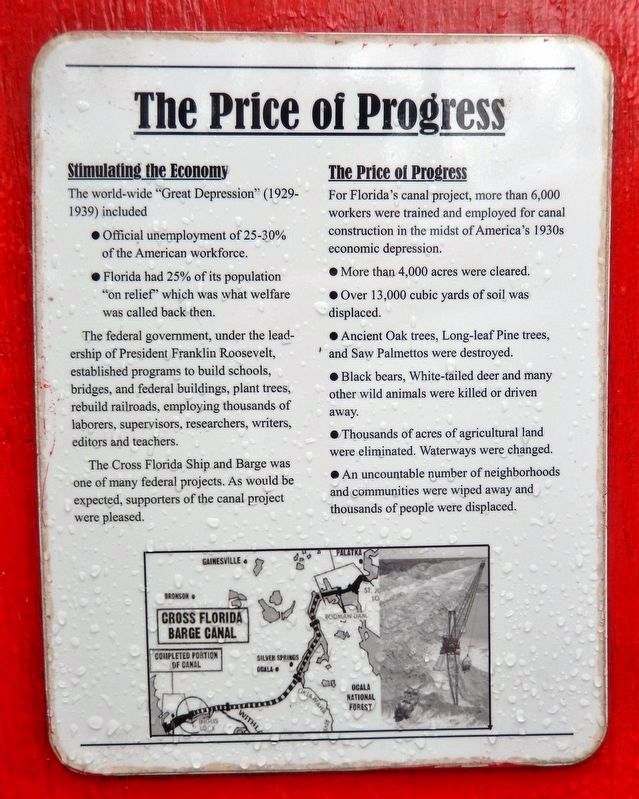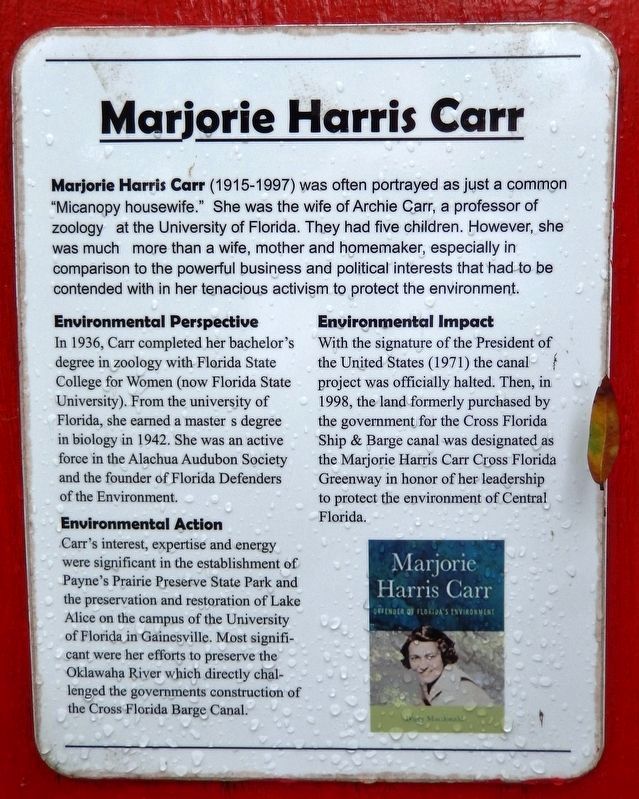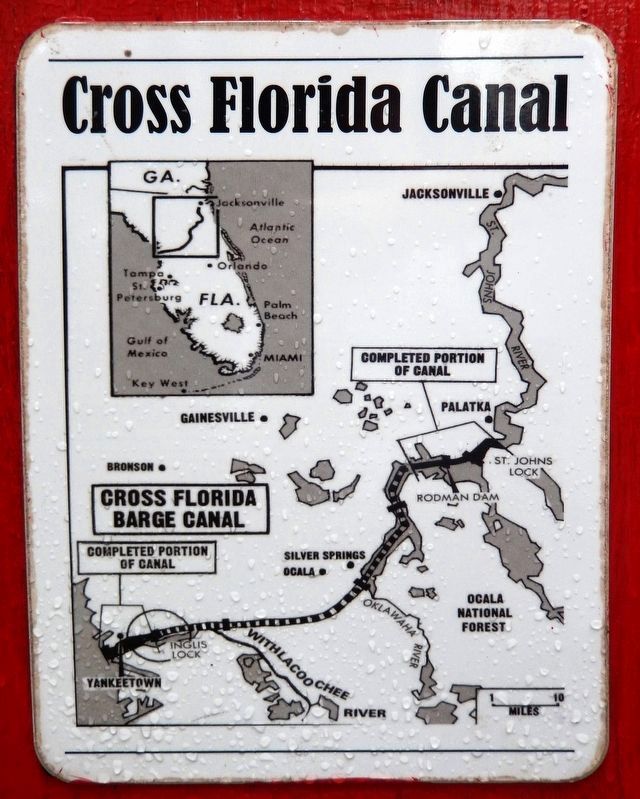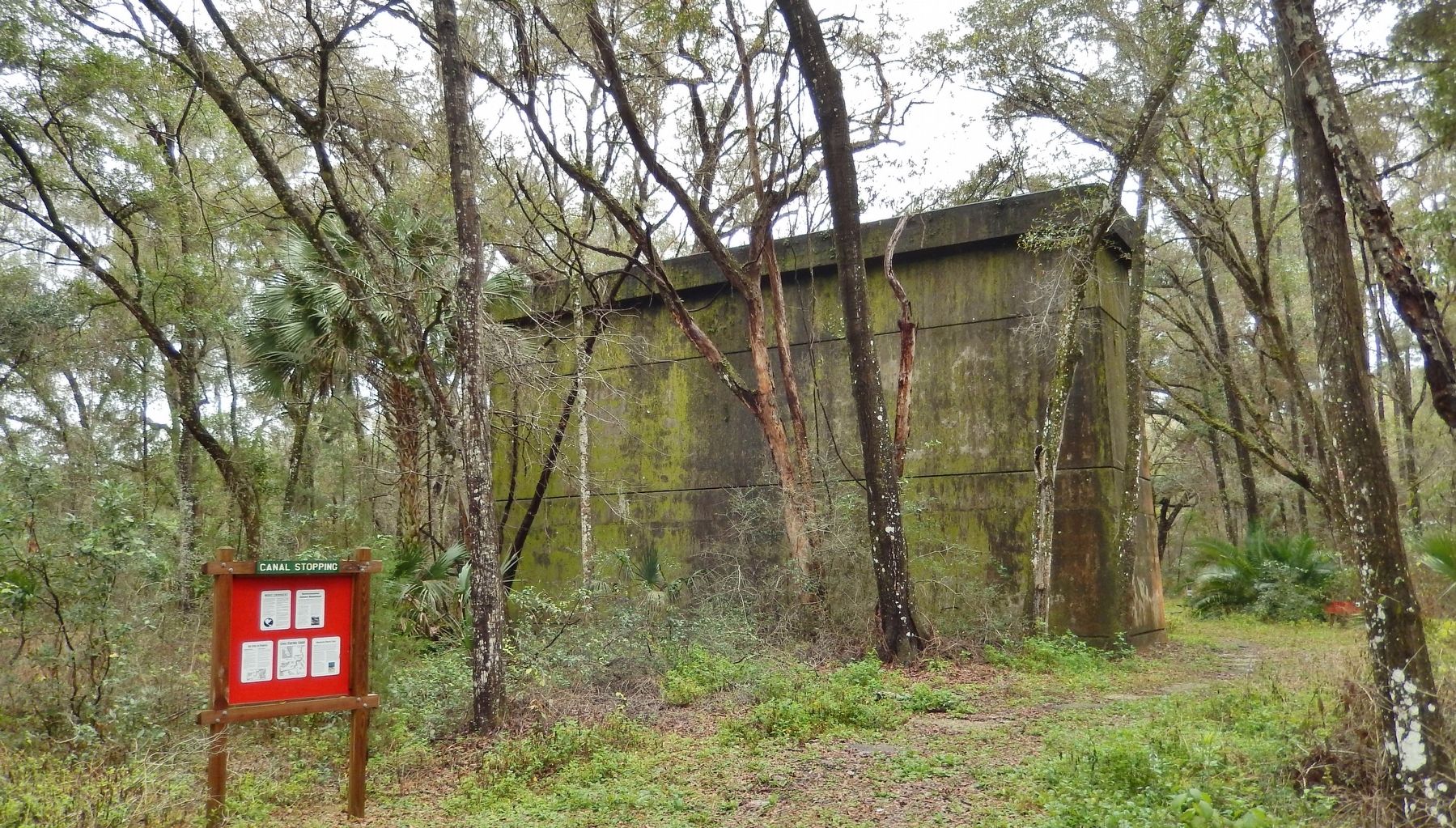Near Ocala in Marion County, Florida — The American South (South Atlantic)
Canal Stopping
Historic Florida Barge Canal Trail
For nearly 500 years, the idea for a Cross Florida Ship and Barge Canal had been kept alive. There were several driving forces.
• Hiding Caribbean gold shipments from pirates until fleets of protected ships sailed to Spain together.
• Decreasing the shipping times and costs for vessels to and from Gulf of Mexico ports sailing around the southern tip of Florida.
• Reducing the number of sunken vessels and cargo losses for sailing through the Florida Keys.
• The combined interests of powerful businessmen, politicians and the United States Army Corps of Engineers.
Even after the Cross Florida canal project was started, new factors had an impact on the practicality of the canal. Like what?
• Shipping by sea no longer dominated commerce.
• Steel ships were too big for any canal across Florida.
• Vastly improved navigational aids for ships.
• A national system of railways had been constructed for transporting people and goods.
• Highways being built, so trucking was becoming more viable for shipping.
• Concern for protecting aquifers in Central Florida was increasing.
• The estimated costs of building a canal were being recognized as likely to be much higher than proponents estimated.
• Federal requirements for providing an Environmental Impact Statement before construction could begin exposed the potential damage the canal would actually cause.
Environmental Impact Statements (EIS) are much more than a few sentences or a long paragraph. It’s a document required by the National Environmental Policy Act (NEPA) enacted in 1972, under the Administration of President Nixon, for proposed actions "...significantly affecting the quality of the human environment.”
An EIS must describe in detail the expected positive and negative effects of a proposed action (such as a canal being constructed). Also related permits by the Clean Air Act, Clean Water Act, Endangered Species Act, and the Federal Highway Act come into play.
It's all very time-consuming and expensive, but was the practical and political result of many decades of our general ignorance and disregard for the environment as well as blatant environmental abuses historically across the nation by business and industry.
Realistically, the combined requirements of these Federal decision-making documents and processes would have ended the completion of the canal if the U.S. Army Corps of Engineers had tried to complete the project. The Canal was officially stopped in 1971 with an Executive Order by President Nixon.
Stimulating the Economy
The world-wide "Great Depression" (1929-1939) included:
• Official unemployment of 25-30% of the American workforce.
• Florida had 25% of its population "on relief" which was what welfare was called back then.
The federal government, under the leadership of President Franklin Roosevelt, established programs to build schools, bridges, and federal buildings, plant trees, rebuild railroads, employing thousands of laborers, supervisors, researchers, writers, editors and teachers.
The Cross Florida Ship and Barge Canal was one of many federal projects. As would be expected, supporters of the canal project were pleased.
The Price of Progress
For Florida's canal project, more than 6,000 workers were trained and employed for canal construction in the midst of America's 1930s economic depression.
• More than 4,000 acres were cleared.
• Over 13,000 cubic yards of soil was displaced.
• Ancient Oak trees, Long-leaf Pine trees, and Saw Palmettos were destroyed.
• Black bears, White-tailed deer and many other wild animals were killed or driven away.
• Thousands of acres of agricultural land were eliminated. Waterways were changed.
• An uncountable number of neighborhoods and communities were wiped away and thousands of people were displaced.
Marjorie
Harris Carr (1915-1997) was often portrayed as just a common "Micanopy housewife." She was the wife of Archie Carr, a professor of zoology at the University of Florida. They had five children. However, she was much more than a wife, mother and homemaker, especially in comparison to the powerful business and political interests that had to be contended with in her tenacious activism to protect the environment.
Environmental Perspective
In 1936, Carr completed her bachelor's degree in zoology with Florida State College for Women (now Florida State University). From the University of Florida, she earned a master’s degree in biology in 1942. She was an active force in the Alachua Audubon Society and the founder of Florida Defenders of the Environment.
Environmental Action
Carr's interest, expertise and energy were significant in the establishment of Payne's Prairie Preserve State Park and the preservation and restoration of Lake Alice on the campus of the University of Florida in Gainesville. Most significant were her efforts to preserve the Oklawaha River which directly challenged the governments construction of the Cross Florida Barge Canal.
Environmental Impact
With the signature of the President of the United States (1971) the canal project was officially halted. Then, in 1998, the land formerly purchased by the government for the Cross Florida Ship & Barge canal was designated as the Marjorie Harris Carr Cross Florida Greenway in honor of her leadership to protect the environment of Central Florida.
Erected by Florida State Parks.
Topics. This historical marker is listed in these topic lists: Environment • Industry & Commerce • Waterways & Vessels • Women. A significant historical year for this entry is 1971.
Location. 29° 6.198′ N, 82° 5.4′ W. Marker is near Ocala, Florida, in Marion County. Marker can be reached from the intersection of Southeast 80th Street (County Road 328) and South Pine Avenue (U.S. 441), on the right when traveling east. Marker is located along the trail at "The Island" - Cross Florida Barge Canal Interpretive Park, just south of the Marion County Sheriff's Station. Touch for map. Marker is at or near this postal address: 3260 Southeast 80th Street, Ocala FL 34480, United States of America. Touch for directions.
Other nearby markers. At least 8 other markers are within walking distance of this marker. Conclusive Federal Action (a few steps from this marker); Deliberate Strategy (a few steps from this marker); Environmental Victory Nears (a few steps from this marker); Opposition to the Canal (a few steps from this marker); Protective Perspective (a few steps from this marker); Great Depression Public Works Project
(a few steps from this marker); A Beautiful Place (a few steps from this marker); Historical Perspective (within shouting distance of this marker). Touch for a list and map of all markers in Ocala.
Related markers. Click here for a list of markers that are related to this marker. Historic Florida Barge Canal Trail
Also see . . .
1. History of the Cross Florida Greenway. The Marjorie Harris Carr Cross Florida Greenway follows the path of the abandoned Cross Florida Barge Canal. Despite never being completed, the gargantuan public works project has a long history. (Submitted on February 17, 2021, by Cosmos Mariner of Cape Canaveral, Florida.)
2. Cross Florida Barge Canal (Wikipedia). It is named for the leader of opposition to the Cross Florida Barge Canal, Marjorie Harris Carr, and was originally a U.S. Army Corps of Engineers canal project to connect the Gulf of Mexico and the Atlantic Ocean across Florida for barge traffic. Two sections were built but the project was ultimately cancelled, due to local opposition related to environmental concerns, including protecting the state's water supply and conservation of the Ocklawaha River Valley ecosystem, but also due to national opposition for the
costs being perceived as "government waste" with "limited national value." (Submitted on February 17, 2021, by Cosmos Mariner of Cape Canaveral, Florida.)
Credits. This page was last revised on February 21, 2021. It was originally submitted on February 14, 2021, by Cosmos Mariner of Cape Canaveral, Florida. This page has been viewed 464 times since then and 62 times this year. Photos: 1, 2, 3, 4, 5, 6, 7. submitted on February 17, 2021, by Cosmos Mariner of Cape Canaveral, Florida.
